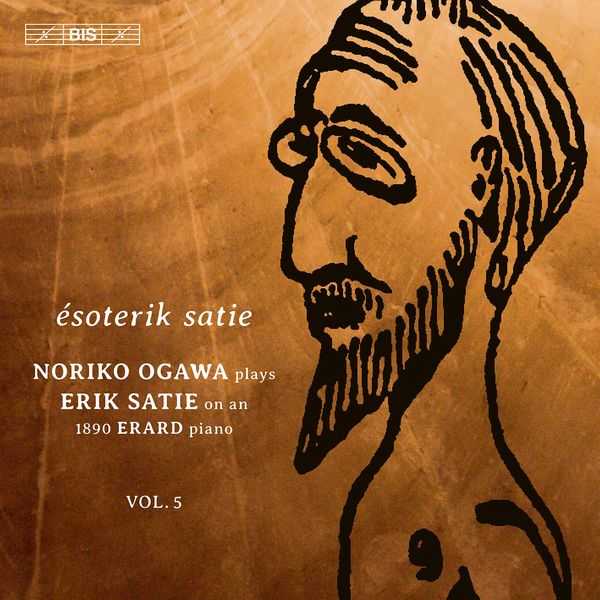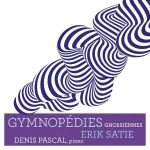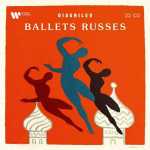
Composer: Erik Alfred Leslie Satie
Performer: Noriko Ogawa
Format: FLAC (tracks)
Label: BIS
Catalogue: BIS2345
Release: 2022
Size: 220 MB
Recovery: +3%
Scan: yes
01. Prélude d’Eginhard
Pièces froides, Airs à faire fuir
02. No. 1, D’une manière très particulière
03. No. 2, Modestement
04. No. 3, S’inviter
Pièces froides, Airs à faire fuire
05. No. 2, Modestement (Version plus chromatique)
Pièces froides, Danses de travers
06. No. 1, En y regardant à deux fois
07. No. 2, Passer
08. No. 3, Encore
Pieces froides
09. Danse de travers II
Nouvelles pieces froides
10. No. 1, Sur un mur
11. No. 2, Sur un arbre
12. No. 3, Sur un pont
2 Préludes du Nazaréen
13. No. 1, Assez lent
14. No. 2, Assez lent
Uspud (Arr. for Piano)
15. Act I, Une plage déserte
16. Act II, La maison d’Uspud
17. Act III, Le sommet d’une montagne; au-dessus un crucifix
Danses gothiques
18. No.1, À l’occasion d’une grande peine
19. No.2, Dans laquelle les Pères de la Très Véritable et Très Sainte Église sont invoqués
20. No.3, En faveur d’un malheureux
21. No.4, À propos de Saint Bernard et de Sainte Lucie
22. No.5, Pour les pauvres trépassés
23. No.6, Où il est question du pardon des injures reçues
24. No.7, Par pitié pour les ivrognes, honteux, débauchés, imparfaits, désagréables, et faussaires en tous genres
25. No.8, En le haut honneur du vénéré Saint Michel, le gracieux Archange
26. No.9, Après avoir obtenu la remise de ses fautes
27. Sans titre (Peut-être pour la “Messe des pauvres”)
3 Harmonies
28. No.1, Lent
29. No.2, Très modéré
30. No.3, Pas vite
31. Prière
32. Leitmotiv de “Panthée”
33. Fête donnée par des chevaliers normands en l’honneur d’une jeune demoiselle
4 Ogives
34. No.1, Très lent
35. No.2, Très lent
36. No.3, Très lent
37. No.4, Très lent
38. Sans titre (Pièce Rose-Croix. Marche)
For the fifth volume in her series of Erik Satie’s piano music, Noriko Ogawa reaches back to an early period in the composer’s life. A large part of the programme comes from Satie’s so-called mystical period. Influenced by medieval plainsong and avoiding all pathos, Satie resorted to austere melodies based on rhythms and harmonies simplified to the extreme; he turned away from the concepts of development and variation in favour of simple repetition of perfectly symmetrical phrases. In other words, he broke completely with the classical-romantic tradition. In its purity and abstraction, Satie’s music from this period seems surprisingly modern by comparison with that of his contemporaries.
The title of this volume is “Ésoterik Satie”, a nickname given to the composer during the period when he began a collaboration with Joséphin Peladan, the grand-master of the “Rose-Croix catholique du temple et du graal”, an artistic movement close to symbolism and esotericism. Satie’s fascination for the Middle Ages is reflected not only in the music itself, but also in the titles of some works, such as Ogives (the pointed arches of Gothic architecture), Danses gothiques or Fête donnée par les Chevaliers Normand.



